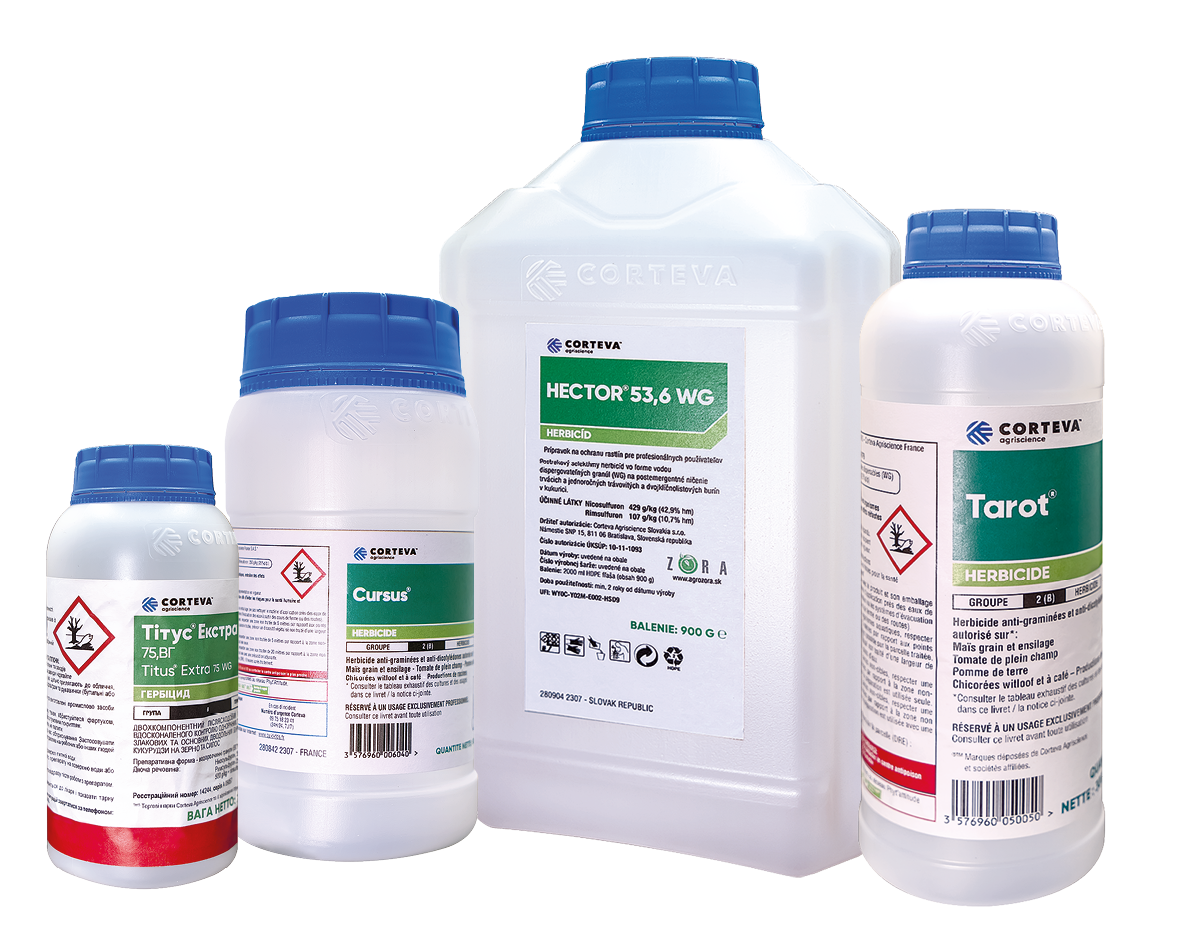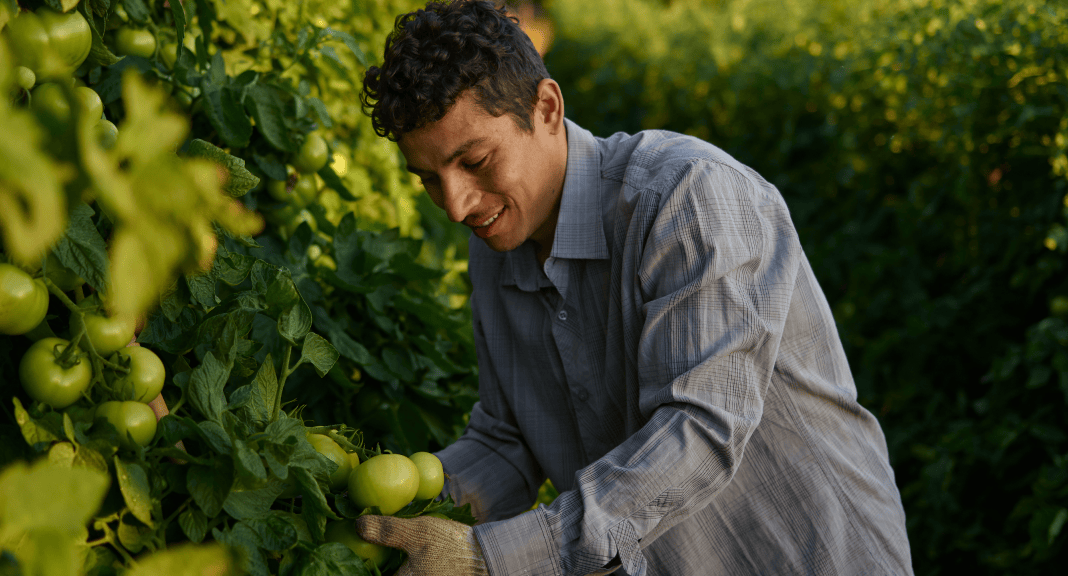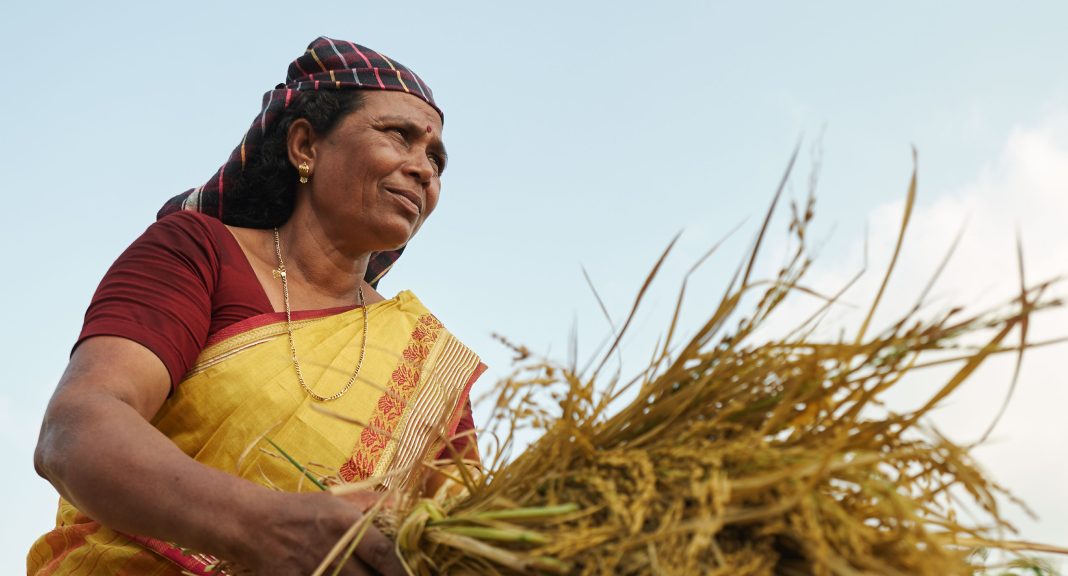From product design to packaging production, we adopt a circular economy approach to minimize our environmental impact. We are also leaders in measuring product impacts on the environment through our internal LCA competency, governed by an internationally recognized set of ISO standards.
Circular product innovations
For new seed, crop protection active ingredients, and biologicals, we have established thresholds for each sustainable innovation criteria and an expectation that each new innovation has at least one notable sustainability advantage across the categories.
90% of our new crop protection solutions in 2024 have a sustainability advantage aligned to UN SDG 12: Responsible Consumption and Production, specific to one or more of the following thresholds:
- Reduce use rate, reduce waste, and improve product application efficiency
- Use sustainably sourced renewable inputs
- Formulation innovation resulting in better hazard classifications, using safer materials in finished products
Sustainability advantages that benefit SDG 12
The reduction in use rate
Based on the opportunity to displace propanil with Rinskor™ active on rice in China over the next five years, this could result in the reduction of 0.5 million tonnes of CO2e over this same period of time.
Using sustainably sourced inputs
Launched to help control key diseases in cereals and other critical food crops like bananas, Inatreq™ active can degrade into inert natural carbon compounds in just under two days, which is 100 times faster than other products.
Circular packaging innovations
Our circular packaging strategy is three-fold:
Package rationalization and design optimization
Industry collection and recycling
Sustainable material and technology innovation
Plastics management is embedded in our overall strategic approach, ensuring both operational efficiency and long-term sustainability. Through a comprehensive assessment of plastic use across our value chain, we have identified key areas where plastics play a critical role and where we can implement meaningful reductions to minimize environmental impact. The focus of this exercise spans from product formulation to the final stages of packaging, highlighting areas for improvement and innovation in plastic usage.
At the forefront of our efforts is the integration of a circular economy model in our packaging practices. In 2022, we conducted a comprehensive global packaging component gap assessment. The findings from this assessment have been instrumental in developing a global roadmap and action plan into 2024. These initiatives are centered around increasing the recyclability and reusability of packaging materials. Key strategies include transitioning to mono-material components for easier recycling, optimizing the efficiency and performance of packaging materials, and substituting virgin plastics with recycled alternatives.
Plasma barrier project
A pivotal aspect of our journey involves the implementation of our plasma-coated high-density polyethylene (HDPE) project across Brazil, Paraguay, Argentina, Chile, and Uruguay. This pioneering project is dedicated to improving the sustainability of packaging by incorporating plasma barrier technology into the production of HDPE bottles.
This shift to using a singular material, HDPE, which is readily recyclable, marks a significant step forward in replacing multi-layer co-extrusion processes. The plasma treatment, conducted in a safely controlled environment, is applied to the inner wall of the container within a shielded and sealed reactor, ensuring safety and efficiency.
What is plasma?
Plasma is an ionized gas or vapor made up of ions, electrons, and various chemically reactive and electrically excited particles. When applied in certain processes, plasma can be used as a thin coating on the inner surface of plastic containers, forming an efficient protection barrier.
Packaging improvements
We launched a new range of plastic packaging in Europe, Middle East, and Africa (EMEA) to replace our previous packaging.
The benefits of this new branded and optimized packaging include:
- Containers leading to 45 MT plastic packaging reduction in the market
- Elimination of induction-sealed cap, leading to better recyclability of caps
- Elimination of non-essential plastic measuring device, representing 44 MT plastic reduction
- Carton case optimization with 30% less material
- Optimization of goods delivery on pallet, reducing GHG transportation footprint

We maintain a vigilant focus on the broader impacts of our plastic use, particularly in relation to environmental and community health.
Our global packaging council and regional teams are tasked with making sustainable packaging decisions. They play a pivotal role in driving us toward more responsible plastic management, emphasizing both environmental protection and community welfare. This commitment extends to participating in global recycling and collection schemes, such as the Ag Container Recycling Council (ACRC) in the United States.
Adhering to extended producer responsibility principles, we manage the environmental impacts of our products throughout their lifecycle, including packaging.
This comprehensive approach mitigates any financial or strategic risks associated with plastic use. We are actively engaged in finding sustainable alternatives to plastics, reducing our dependence on them and promoting environmentally friendly options.
Through these efforts, we are not just minimizing our environmental impact but also setting a benchmark in sustainable practices within the agricultural sector.
Our proactive and comprehensive approach to plastic management underlines our commitment to safeguarding the planet and ensuring the welfare of future generations.
Measuring circularity
We have established an internal LCA competency: a science-based, holistic approach to quantifying environmental impacts across the value chain of a product or process. Industry, academia, and government agencies have applied LCA for many purposes over the years.
Impacts are considered across the full value chain, including raw material production and delivery, direct operations, use, and end-of-life scenarios. Our internal LCA team will continue to partner with external consultants and stakeholders to provide the analysis and insights needed to achieve targets and further quantify the environmental impact of our sustainably differentiated products.





